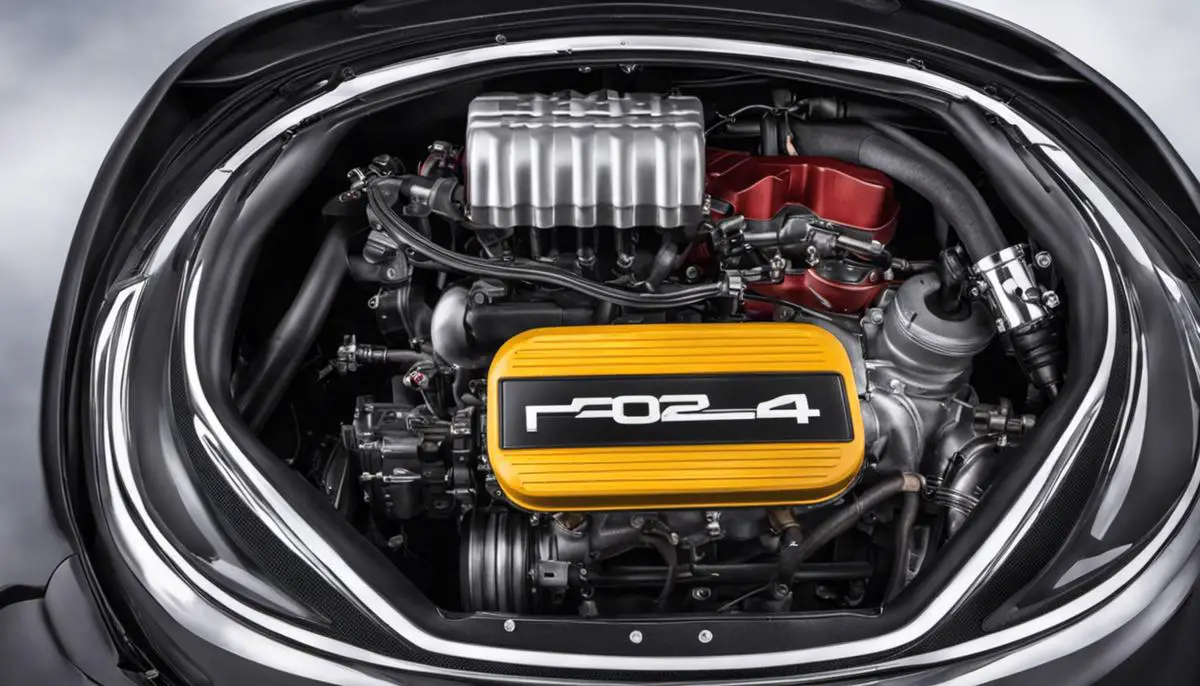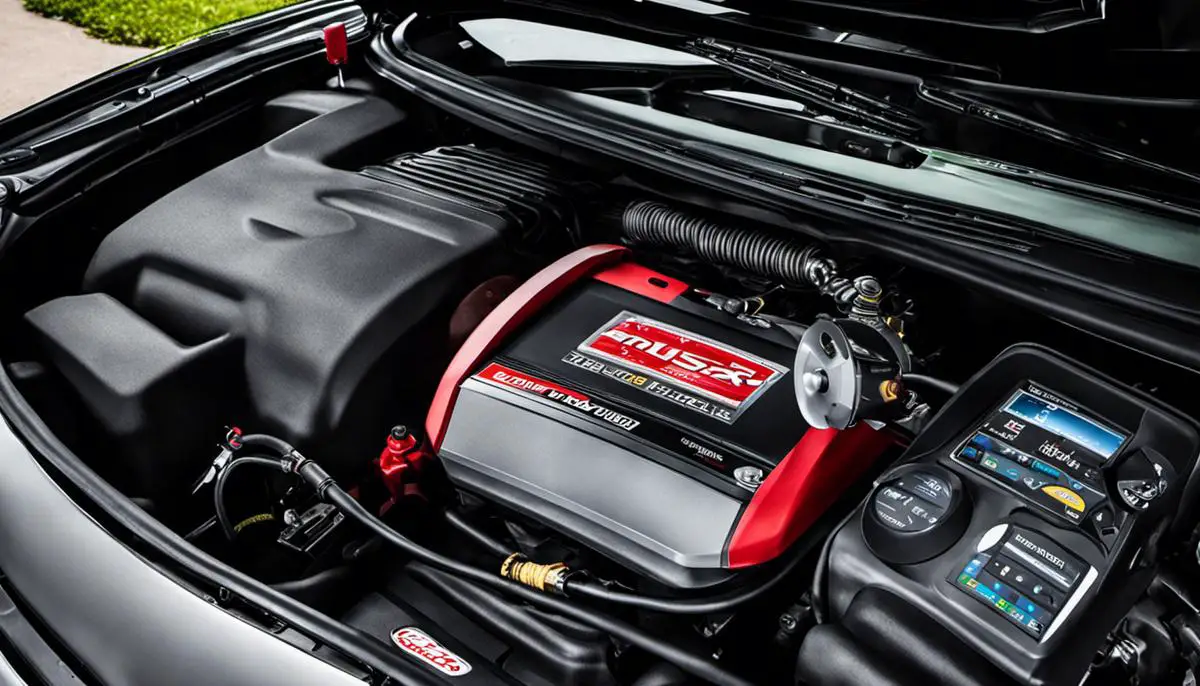Understanding the intricate functionalities of your Chevy and its diagnostic system can be a daunting task, especially when faced with code alerts like P0014. However, attaining a solid grasp of what P0014 code signifies, from the problems it may point out to potential solutions can be a significant step towards efficient car-ownership. Equally crucial is knowledge on how to accurately diagnose the problem. This not only helps you better understand your Chevy’s behavior and needs, but also puts you in a better position to effectively solve the indicated issues. Whether it involves upgrading your skills in identifying and cleaning dirty parts, or learning when and how to replace faulty ones, tackling the P0014 error code problem can be an empowering journey.
Understanding P0014 code
Decoding the P0014 Code in Your Chevy: The Tech-Savvy Way
If you’re reading this, chances are you’re a proud owner of a Chevy, and you’ve had the unwelcome surprise of your “Check Engine” sign flashing, along with seeing the P0014 code on your OBD2 scanner. Being tech lovers and early adopters, maintaining and troubleshooting tech-related issues, including car technology, is something we relish. So, let’s get straight to business and unearth what the P0014 code means for your Chevy.
The P0014 OBD2 code relates to your vehicle’s engine and specifically targets the on-board diagnostics and timing of it. Encountering this code implies there’s an over-advanced system performance in your car’s Camshaft Position ‘B’ – Timing Over-Advanced or System Performance (Bank 1). In simpler terms, the Engine Control Module (ECM) has detected that the bank 1 exhaust camshaft has advanced beyond the specified limits.
While there is no cause for panic, it is essential to understand what prompts this error code. Generally, factors such as a dirty engine oil, misguided timing chain, or malfunctioning camshaft phasers and solenoids may give rise to the P0014 alert.
Exploring why the P0014 code is relevant is essential for every tech-savvy Chevy driver. This code is crucial in the sense that the camshaft and the crankshaft are components that manage your engine’s activity. If these components become functionally irregular, it can cause your engine to work harder than it should, leading to wear and tear, reduced gas mileage, and potentially serious engine damage.
Rectifying the P0014 code involves several steps:
- First, ensure to clear your engine oil. Dirty oil can hamper the VVT (Variable Valve Timing) system, thus triggering this alert.
- Look to diagnose the timing chain. It helps control the engine’s intake and exhaust stroke, and if it is faulty, adjusting it or getting it replaced may rectify the P0014 code.
- Check the camshaft phasers and solenoids. These help alter the camshaft’s timing, and if they’re malfunctioning, replacing them may solve the issue.
- A professional diagnostic scan tool should be used to clear the code and perform a road test. If the code reappears, then further inspection of the timing chain and the camshaft phasers and solenoids might be necessary.
It’s always important to remember that maintenance and regular checks can prevent unexpected situations with your vehicle. Being forward-looking as we are, the exploration and knowledge extrapolated from these checks can not only save time and money but also extend the life of your Chevy.

Diagnosing the P0014 code
Now that you’ve learned and understood what the P0014 code means for your Chevy, as well as the common causes of this code, it’s time to take a step-by-step approach to diagnosing the issue. Here’s how to go about it:
Step 1: Preliminary Diagnosis
Understanding the specifics of the P0014 code is the first step. This code signifies an issue with the camshaft’s ‘B’ position on Bank 1. Bank 1 is the engine side with the #1 cylinder, and ‘B’ refers to the exhaust camshaft. It means that the camshaft is over-advanced, causing the engine timing to be off. Now that you understand what components are involved, utilize this knowledge while troubleshooting.
Step 2: Check the Engine Oil Level
Before moving on to more complex diagnostics, it’s important to verify the simpler factors first- starting with your engine oil. Low engine oil level or poor oil quality can result in the P0014 code, as the Variable Camshaft Timing (VCT) system relies on it. If your oil level is low, replenish it and see if that solves the problem. If the oil is dirty or looks like sludge, it may be time for an oil change.
Step 3: Investigate the Timing Chain
If the engine oil status turns out fine, the issue may lie with your timing chain. A faulty or degenerated timing belt or chain can cause the valve timing to malfunction, leading to the P0014 code. Therefore, inspect it thoroughly and consider replacing it if necessary.
Step 4: Examine Camshaft Phasers and Solenoids
The P0014 code could also hint at an issue with the camshaft phasers or solenoids, which play key roles in the valve timing operation. Examine these components for damage or malfunctions.
Step 5: Utilize a Diagnostic Scan Tool
The final step involves using a specialized scan tool that allows for scrutiny of the engine’s live data. By observing the engine RPM, mass air flow sensor readings, and other parameters, you can gain additional insights into the P0014 code’s presence. These devices may also perform specific actuator tests on the solenoids and the camshaft phaser to help determine their performance status.
By following these steps meticulously, you can comprehensively diagnose the reasons behind the P0014 code in your Chevy. Just remember that maintaining your vehicle consistently, including regular checks and proactive troubleshooting, can prevent such issues from cropping up, improving overall vehicle longevity and peak performance.
In the thrilling realm of automotive technology, understanding the intricacies of these codes and taking firm control of your vehicle’s health is definitely empowering. Who said a tech enthusiast’s playground was limited to smartphones, computers, and gadgets only? With due diligence and the right tools at your disposal, you can ensure that your beloved Chevy remains a smooth runner for a long time!

Solving the P0014 Error Code
Gaining priceless insight into the root of the P0014 code in Chevy cars, one cannot overstate the worth of a tech-driven approach towards vehicle repairs. In this context, it’s paramount not to gloss over consideration of finer details. Let’s progress by accurately pinpointing the solution, all while mitigating risks.
Right off the bat, it’s crucial to understand the components affected by the P0014 code. Pivotal players include the camshaft, timing chain, and oil system, all of which are interconnected. Any malfunction or disruption in these segments could trigger the P0014 code.
Step one is a swift check of the engine oil level. With a cool engine, remove the dipstick, wipe it clean, and reinsert it before pulling it out again. Confirm if the oil level is between the acceptable range indicators on the dipstick. An inadequately lubricated engine is a potential breeding ground for these codes. But do not stop at merely confirming your oil level; ensure the oil is clean, so it does not impede the smooth functioning of the engine.
Moving forward, delve into the timing chain territory. Uncover if any links are stretched or loose, causing the camshaft and crankshaft’s relationship to go haywire thereby, eliciting the code. A cursory glance usually won’t reveal this faulty link, so ensure to develop a procedural diagnosis that closely monitors the timing chain.
Next in line, bring your focus onto the camshaft phasers and solenoids. These are tiny yet crucial cogs in the engine system which control the camshaft’s positioning. Look out for any electrical failure in solenoids or wear in phasers that can misdirect the camshaft, generating the P0014 code. Note that this process may necessitate a teardown for detailed analysis.
Last but not least, to seal your troubleshooting regimen, employ a professional-grade diagnostic scan tool. Rather than generic ones, opt for a comprehensive scan tool that can provide advanced data. It can precisely point out intermittent failures or defaults that an eye can overlook, helping you identify and clear the P0014 code from your Chevy effectively.
Indeed, adopting a systematic approach that aligns with the logic of problem-solving can guide tech enthusiasts to aptly conquer the P0014 code. However, recognize that there’s hardly a one-size-fits-all strategy for issues like these. Sometimes, a little professional advice can go a long way. But grounds-up troubleshooting can always keep you on top of your game, instilling confidence in your technical skills, and keeping vehicle hiccups at bay. Tech wisdom combined with intuitive understanding can unlock the potential to manage, resolve, and even prevent discomfort tied to unprecedented vehicle troubles. Technology indeed gifts empowerment!
Being well-informed and purposeful in dealing with the P0014 code in your Chevy opens up a gate of benefits. It empowers you to promptly intervene and take charge when your car’s health is at stake, potentially saving you costly repairs or replacements in the long run. As you become proficient in diagnosing the P0014 code, you’ll be able to address issues with more confidence. And, with a clear grasp on how to fix the P0014 problem, from cleaning to replacements, you become a proactive part of your vehicle’s well-being, boosting your car’s performance and longevity. Truly, understanding, diagnosing, and solving the P0014 code issue is a game-changer for any Chevy owner who appreciates value, excellence, and the joy of smooth, uninterrupted drives.